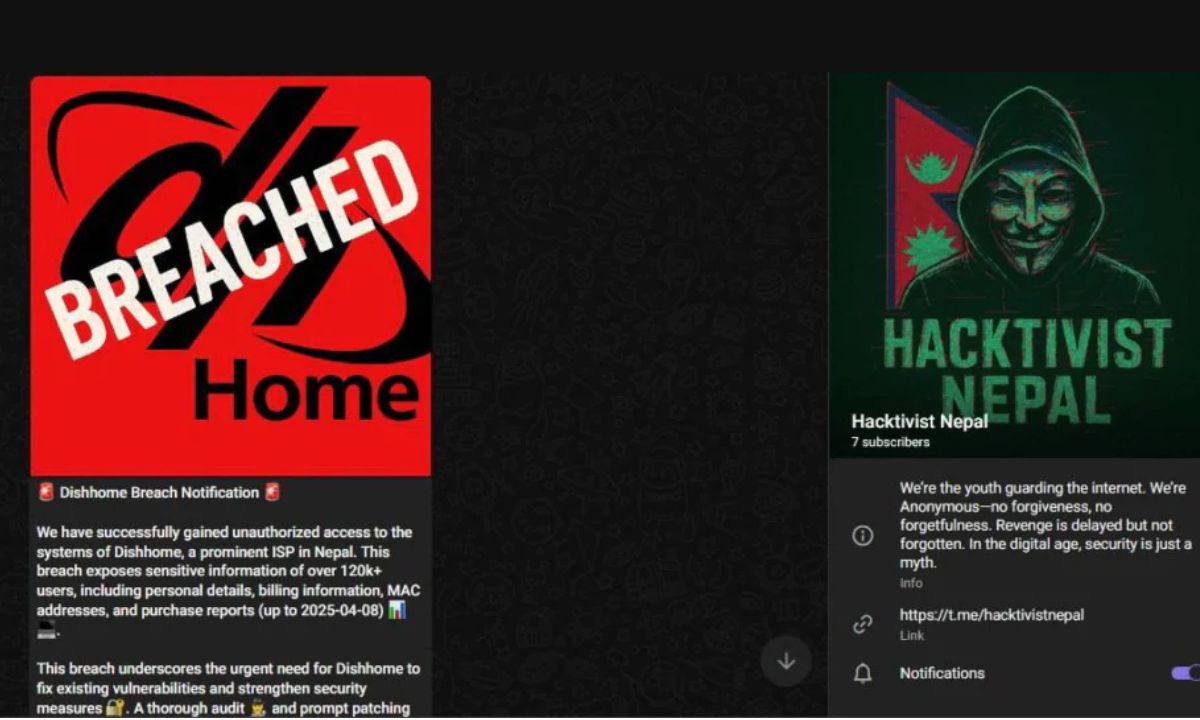Now Reading: Who is Hacktivist Nepal? The Group Behind the Government Website Attacks
-
01
Who is Hacktivist Nepal? The Group Behind the Government Website Attacks
Who is Hacktivist Nepal? The Group Behind the Government Website Attacks

A group calling itself Hacktivist Nepal has claimed responsibility for hacking two official Nepali government websites: the Department of Survey (dos.gov.np) and the District Forest Office Sunsari (dfosunsari.koshi.gov.np). The group says the cyberattack was carried out as a protest against corruption and to support reinstating the monarchy in Nepal.
Why Did They Do It?
Hacktivist Nepal released a bold statement online, saying that democracy in Nepal has led to increasing corruption and political instability. They accuse current political leaders of being self-centered and ignoring the needs of the people.
“Democracy has brought Nepal to the peak of corruption. Political instability and party politics have prioritized personal benefits over public welfare. We believe the restoration of the monarchy would bring national unity, long-term peace, and a governance system free from corruption.”
The group argues that a constitutional monarchy could offer stronger national direction and a more stable future for the country.
Targeted Government Websites
The group claims to have gained access to the following websites:
- dos.gov.np – The official website of Nepal’s Department of Survey, which manages land mapping and records.
- dfosunsari.koshi.gov.np – The site for the District Forest Office in Sunsari, responsible for forest and environmental conservation in Koshi Province.
Hacktivist Nepal shared screenshots showing access to these websites to support their claims. However, no government authority has confirmed the breach yet.
Is This Just Hacking or a Political Protest?
The attack appears to be more than just a technical intrusion. It’s a political message. Hacktivist Nepal is using cyberattacks as a protest to push their belief that Nepal should return to a monarchy.
They argue that the monarchy can:
- Reunite the country
- Reduce corruption
- Provide long-term political stability
Some Nepalis, disappointed by years of unstable democratic rule since the monarchy ended in 2008, may resonate with these views.
What Are the Risks?
If the claims are true, this breach shows serious cybersecurity weaknesses in Nepal’s government systems. Such attacks can lead to:
- Leaking of sensitive personal or public information
- Disruption or delays in government services
- Decreased public trust in digital platforms
Cybersecurity experts in Nepal may now face pressure to improve digital defense mechanisms across all government portals.
Government Response So Far
As of now, there has been no official statement from the affected websites, the Nepal Police Cyber Bureau, or the National Information Technology Center (NITC).
If confirmed, we could soon see:
- A full government investigation into the incident
- Increased budget and efforts toward cybersecurity
- Political debate over cyber protests and governance










